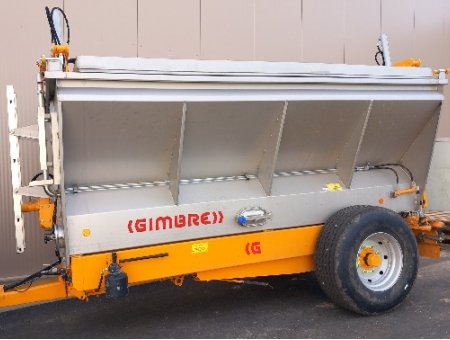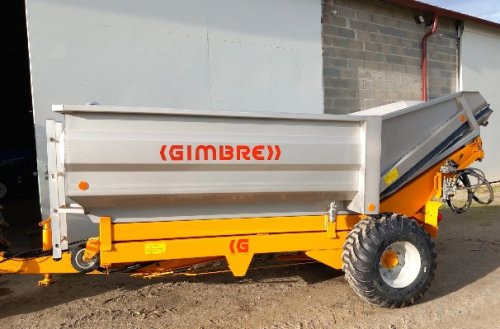Harvest bin
Grape harvest bins, also known as 'dumpers', differ from grape harvest trailers in their loading capacity. Tippers are generally less voluminous (25 to 80 hl) than trailers, but they are easier to handle and lighter, and are often preferred by farms with little road transport. They are also better able to adapt to the reception format at the vat house, as there are several options for emptying the harvest (auger, spout, etc.).

- Towed skips
These skips are used for both mechanised and manual harvesting.
- Self-propelled skips
They are often used on small farms and for manual harvesting.
Variations on towed skips:
- Beak tipper
- Screw or spout tipper

Towed elevating bucket with beak and vibrator
Component parts
The chassis
The chassis is the tipper's support structure, to which the hitch, box, axle and tipping device are attached.Elevating tippers have two rectangular chassis:
- a fixed chassis
- a lifting frame mounted on a parallelogram, which allows the grape harvesting bucket to be raised.
The box
The body is the structure of the skip itself. The inside of the body is made of epoxy resin-coated steel or stainless steel. Loading capacity varies between 25 and 80 hectolitres on average.Options
Watertight lid and inerting
A hydraulically-operated watertight lid is available to ensure watertightness during transport and to protect against oxidation of the harvest. A neutral gas inerting option is also available to further prevent the risk of oxidation.Double bottom with draining grid
The bottom of the skip is fitted with a double perforated partition (smaller volume than the main skip). This option is widely used in vineyards, as it allows the free-run juice to be separated from the harvest as soon as it arrives at the vat house, by pumping it directly to a low valve. The free-run juice can then be treated before returning to the vat room, or simply separated from the harvest with a view to bleeding.Auger, spout or screw and ogive pump
Depending on the type of reception at the winery, several options are available for unloading the harvest:- By auger, with adjustable flow rate, to feed the reception equipment (harvest pump, destemmer, sorting table, etc.). The screw can be driven hydraulically or electrically.
- By spout (more or less narrowed according to demand). The throughput is much greater than with an endless screw. A spout with a vibrating bottom is also available, depending on the manufacturer (lower throughput). This will help to regulate unloading and drain the grapes before placing them on a sorting table, for example.
- By bullet pump. The harvest is emptied very quickly, with a flow rate of around 30 tonnes/hour, depending on the model. This option allows the harvest to be sent quickly and directly to a press or fermentation vat, without having to go through the destemming or sorting table stage.

Screw elevator












